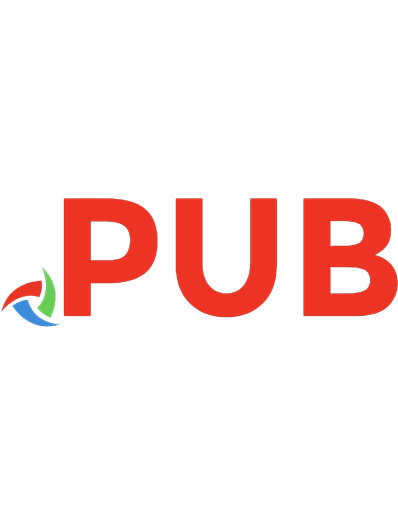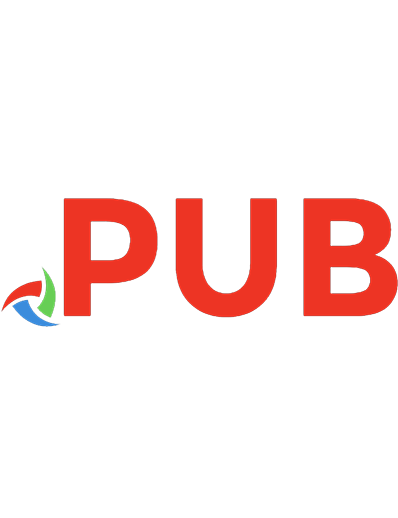Gamification for Product Excellence: Make your product stand out with higher user engagement, retention, and innovation 1837638381, 9781837638383
Streamline your product management process with gamification strategies, frameworks, and best practices from experts to
131 105 17MB
English Pages 350 Year 2023
Table of contents :
Cover
Title Page
Copyright and Credits
Endorsements for Gamification for Product Excellence
Description
Dedication
Foreword
Contributors
Table of Contents
Preface
Chapter 1: Gamification Basics
Introduction to gamification
Games as a business
Gamification basics
History of gamification
The birth of games
Games as motivators
Gaming goes electronic
Games in the home and everyday life
Connectivity in game design
Key concepts in gamification
Reward systems
Progress tracking
Narrative and storytelling
Social engagement
Game psychology
Where gamification stands today
Gamification ethics and planning
Industry acceptance
Summary
Further reading
Chapter 2: Gamification for Product Managers
Product manager core competencies
Product managers’ emotional quotient (PMEQ)
“Elite eight” product manager skills
How this book fits into your product career
Gamification increases user engagement
Benefits of gamification for user engagement
Why the app was created
Gamification can give “nudges” to desired behaviors
Gamification differentiates your product and breaks the status quo
Summary
Chapter 3: Gamification Frameworks and Experts
Gamification frameworks and methodologies
The MDA framework
The Fogg Behavior Model
The SCARF Model
HEXAD User Type Framework
The Octalysis Framework
The Hooked Model
The RAMP framework
SAPS Reward Framework
RECIPE Framework
The Game Thinking Framework
The PBL Model
6D Framework
4 Keys 2 Fun
Additional players in the game
Jane McGonigal
Celia Hodent
Mihaly Csikszentmihalyi
Summary
Further reading
Chapter 4: Understanding Your User
Market research, data, and collection methods
Primary research
Secondary research
Qualitative versus quantitative methods
Sample size and sampling methods
Sample size example
Understanding user motivation and behavior
Triangulating insights and bridging the qualitative-quantitative divide
Applying market research insights to drive product excellence
Creating user personas and Jobs to Be Done
Personas
JTBD
Summary
Chapter 5: Game Mechanics and Psychology
Reward systems
Point redemption
Punch cards
Referral systems
Content unlocks
Memberships
Community recognition
Purchase matching
Random loot
Progress tracking
Points
Leveling
Badges
Achievements
Completion scores
Step counters
Completion rewards
Tests of knowledge
Accomplishment splashes
Save points
Anniversary call-out
Narrative and storytelling
Customer reviews
Environmental, Social, and Governance
Year in review
Inventory systems
User profiles
Avatars
Mentor
Abandonment capture
User research artifacts
Social engagement
High scores
Leaderboards
Live collaboration
Share button
Voting
Reactions
Chat
Friends and follow
Game psychology
Clues
Layering
Experimentation
Ambiance
Repetition
Landmarking
Easter eggs
Emergent behavior
Boss fights
Combos
Summary
Further reading
Chapter 6: Designing a Gamification Strategy
Setting goals and objectives
Defining OKRs
Defining success metrics
Selecting your personas and JTBD to design around
Choosing the right game mechanics
Hi-Z Fitness
PMM
Creating a game loop
Create progression systems
Encourage social interaction
Include challenges and variety
Incorporating gamification into the user experience
Creating a user journey map
Creating a user flow diagram
Wireframes
Summary
Chapter 7: Implementing Your Gamification
Decoding your gamification
Building your implementation team
Building a prototype
Building your product
Writing user stories
Milestones and iteration testing
Product and feature launch
The full product launch
New feature rollouts
Setting up tools to track performance
Making data-driven decisions
User acquisition
Activation
Monetization
Retention
A/B testing
Pivot or persevere
Creating a process of continual improvement
Implementing feedback loops
Summary
Chapter 8: Challenges and Limitations in Gamification
Keeping gamification ethical
Addiction by Design
Balancing gamification and user privacy
Anonymization and aggregation of data
User control and consent
Accessibility to all users
Ensuring gamification doesn’t harm the user experience
Avoiding common pitfalls and mistakes
Behavioral insights
Another example of mistakes from prominent literature
Summary
Further reading
Chapter 9: Selling Your Gamification Strategy
Building your business case
Use case – Kahoot
Step-by-step guide for creating a compelling business case for gamification
Leadership buy-in
Example of utilizing the Pyramid Principle
Relationship building
Use case – Atlassian
Cross-functional teams
GTM strategy
Case study – Apple Watch
Case study – GuruShots
Case study – Peloton
Summary
Further reading
Chapter 10: Gamifying Your Product Development Processes
The draft game
Utilizing design thinking to create gamified activities for product development
Empathize – understanding your team’s needs and motivations
Define – setting clear goals and objectives for gamified activities
Ideate – brainstorming creative gamification strategies
Prototype – designing and testing gamified activities
Implement – integrating gamified activities into your product development process
Gamifying your product development process
Gamifying the ideation process
Ideation and innovation sessions
Recognizing and rewarding top contributors
Gamifying product vision and strategy development
Collaborative workshops with gamified reward systems
Creating team-based challenges and goals
Gamifying market research
Competitive rewards for achieving milestones in market research
RICE scoring for feature prioritization
Gamifying user experience (UX) design
Design challenges and competitions
Leveling up your UX and UI teams
Gamifying product management
Gamifying product development and execution
Reward systems for meeting development milestones
Sprint-based challenges and rewards
Encouraging cross-functional collaboration in product development
Gamifying product feedback and continuous improvement
Improvement challenges and rewards
Gamifying user testing and feedback collection
Gamifying gathering requirements
Gamifying the process
Gamifying backlog refinement
Gamifying the Agile development process
Gamified task management systems
Themed retrospectives
Gamifying quality assurance and testing
Reward systems to find and report bugs
Product implementation
Gamifying product launch planning
Gamifying the product launch process
Team-based rewards and recognition for successful launches
Post-launch goals and challenges to maintain motivation
Gamifying post-launch monitoring and analysis
Leveling up your product marketing team
Summary
Further reading
Chapter 11: Case Studies and Best Practices
Brands that master gamification
Duolingo
Strava
GuruShots
The American Red Cross
Habitica
Prodigy
Gamification strategies that contributed to their success
Best practices and lessons learned
TerryBerry
Bed Bath & Beyond (Overstock)
Entrenuity
Summary
Further reading
Chapter 12: The Future of Gamification
Gamification on Earth in 2033
Drivers and signals of change
Drivers of change
Signals of change
Four examples of how gamification will shape the future
Technology drivers of change
Signals of change – how AI is changing the future
Regulation and policy drivers of change
Signals of change – deregulation of gambling
Drivers of change – shifts in the workforce
Signal of change – Upwork
Driver of change – health and wellness
Signal of change – improved health through gamification
Summary
Index
About Packt
Other Books You May Enjoy










